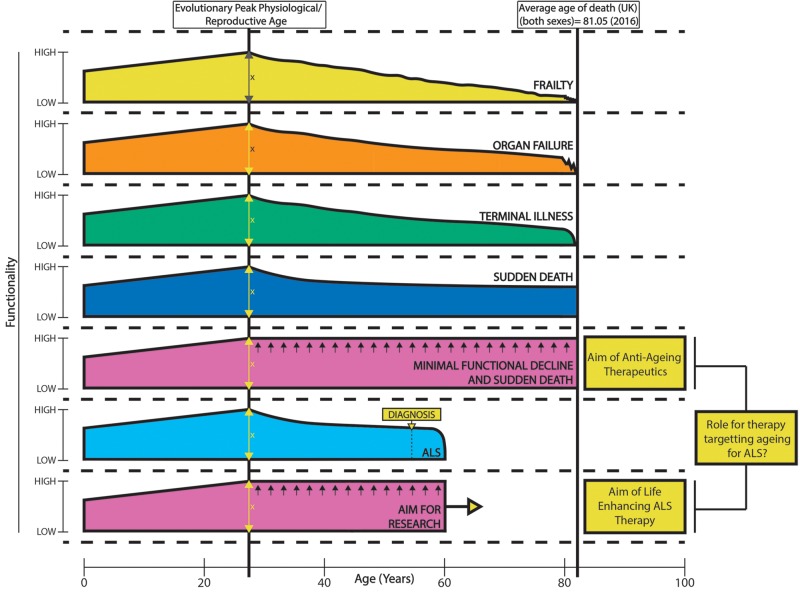Figure 3.
Healthspan versus lifespan: ageing and ALS. Patient functionality alters with age. There is an increase in functionality from birth to optimum reproductive age where, evolutionarily, humans reach peak performance to give best chance of survival on a species level. From then, there is a gradual decline in functionality that can lead to disability once a certain threshold is passed. In ALS, this functional decline is particularly pronounced, with end of life trajectory of terminal illness and death at a much younger age. A variety of end of life trajectories exist, leading to significant disability before death (when compared to sudden death where there is no further functional decline) (Lunney et al., 2003). Functionality is a key component of quality of life, so while lifespan or longevity is seen on the x-axis, healthspan (years spent in good health/quality of life/functionality) is seen on the y-axis. The aim of therapeutics in ageing (Crimmins, 2015; Olshansky, 2018) and ALS research is to maximize healthspan and minimize functional decline and disability.

